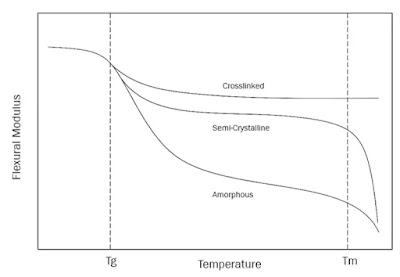"I have seen recommendations for slower than ASAP rates from the top temperature, but most schedules say 9999 or ASAP. Which is right?"
Slow drops in temperature from top to annealing temperatures risk devitrification. Accepted advice is to go ASAP to annealing temperature to avoid devitrification forming.
Breaks do not occur
because of a too rapid drop from top temperature to annealing. The glass is too plastic until the
strain point has been passed to be brittle enough to break. On the way down
that will be below an air temperature of 500˚C/933˚F.
Different kilns
cool from top temperature at different rates. Ceramic kilns are designed to
cool more slowly and may need assistance to cool quickly. This is usually
by opening vents or even the door or lid a little. Glass kilns are designed to lose temperature
relatively quickly from high temperatures. They do not need a crash
cooling as ceramic kilns may need in certain circumstances. Of course, crash cooling may be necessary for some free drops and drapes.
The length of the
soak at annealing is determined by the effective thickness of the piece. Tack fusing needs to be annealed for
thickness as a factor of 1.5 to 2.5, depending on profile.
The extent to which you control the cooling to room temperature after the anneal soak is dependent on the calculated thickness of the piece you are cooling. The objective is to keep the internal temperature differential to 5˚C/10˚F or less to avoid expansion/ contraction differences that are great enough to break the piece. Those rates are directly related to the required length of the anneal soak. Those rates can be taken from the Bullseye chart for Annealing Thick Slabs. The Fahrenheit version is is available too.
An example. If you have a 2
layer base with 3 layers (=15mm) stacked on top for a rounded tack fuse, you need to
fire as for at least 30mm. This will require controlled cooling all the way to
room temperature.
- ·
The
rate to 427˚C /800˚F will be19˚C /34˚F
- ·
The
rate to 370˚C /700˚F will be 36˚C /65˚F
- ·
The
final rate 120˚C /216˚F to room temperature.
You may need to
wait a day before any coldworking. An example from my experience shows the necessity. I checked a piece for stress a few hours after
removing the piece from the kiln when it felt cool to the touch. It puzzled me
that stress showed, although it didn't on similar pieces. The next
morning, I went to check if I misunderstood the reading. Now, a full 15 hours
after coming out of the kiln, there was no stress. The example shows that
the glass internally is hotter than we think. And certainly, hotter than the
air temperature.
In the temperature regions above the strain point, the glass
needs to be cooled quickly. In the annealing region and below the glass needs
to be cooled slowly.
More information is available in the eBook Low temperature Kilnforming. This is available from Bullseye or Etsy

No comments:
Post a Comment